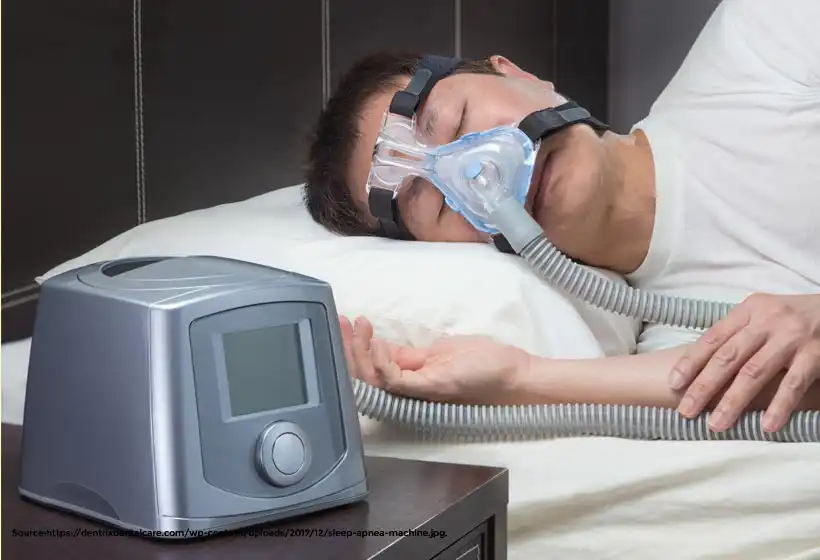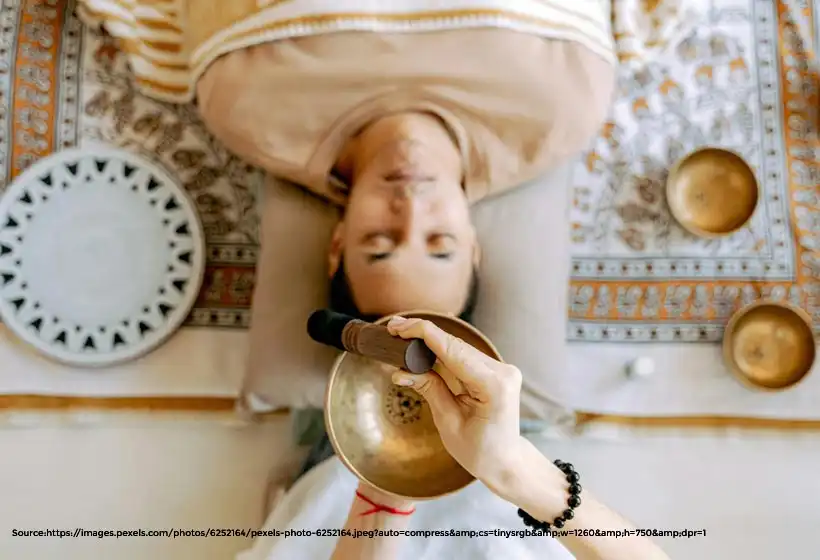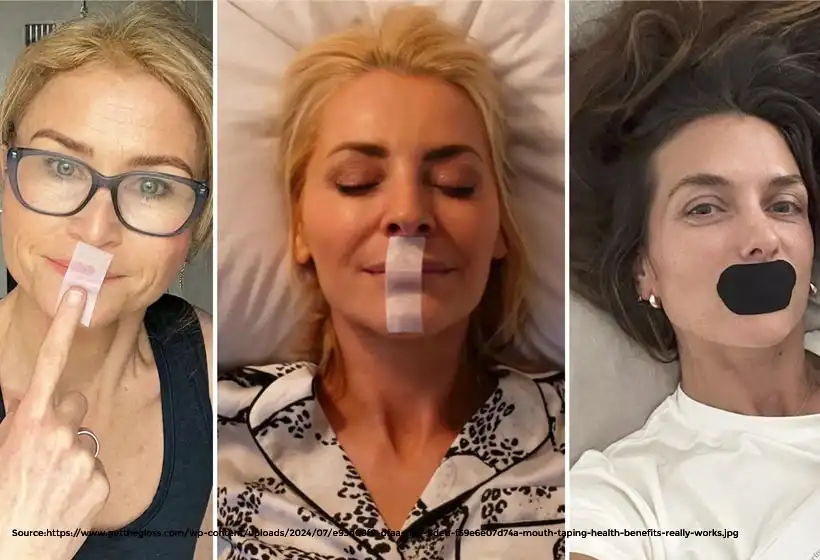Why Do I Talk In My Sleep? Facts on ‘Somniloquy’

As someone deeply fascinated by the mysteries of sleep, I’ve often wondered: What causes the night-time talk show?
Sleep talking, or ‘somniloquy’, is one of the most intriguing phenomena in sleep science.
While it’s often dismissed as harmless mumbling, sleep talking can hold clues to underlying conditions like sleep apnea, night terrors, or even medication effects.
In this piece, I’ll explore how simple remedies like mouth taping, the role of medications like fluoxetine, and disorders such as seizures can impact sleep talking. Read on to uncover mysteries as I draw the connections and solutions to a more restful sleep.
Sleep Talking – Causes
The first time I heard my partner talking in his sleep, I thought he was awake, having an entire conversation with…well, someone who wasn’t there.
At first, it was amusing. Phrases like “Don’t forget the penguins!” left me chuckling, but soon, my curiosity took over.
“Why do people talk in their sleep? Is it just random, or is there more to it?”
I detailed my way into research, and what I discovered fascinated me. Sleep talking, or Somniloquy, might seem harmless, but it often holds clues about what’s happening beneath the surface.
Here’s what I found.
What Causes Sleep Talking in Adults?
Sleep talking is called Somniloquy; it’s a common phenomenon where individuals vocalize sounds, phrases, or even complete sentences during sleep.
1. Mental Health Conditions
Mental health plays a significant role in sleep-related behaviors. Conditions such as depression, anxiety, and Post-Traumatic Stress Disorder (PTSD) are common causes behind sleep talking. These conditions disrupt the natural balance of the sleep-wake cycle, leading to increased fatigue and the likelihood of talking during dreams.
2. Medications
Certain medications, especially antidepressants, are known to affect sleep patterns and cause parasomnias like sleep talking. Other medications, depending on their side effects, may also interfere with REM sleep, the stage where dreams occur. This disruption can manifest as talking during sleep.
Fluoxetine and Medication-Induced Sleep Talking
Certain medications, like fluoxetine (used to treat depression and anxiety), can influence the quality of sleep and increase the likelihood of sleep talking. These drugs alter brain chemistry, affecting Rapid Eye Movement (REM) sleep and possibly leading to parasomnias.
3. Sleep Deprivation
Deprived or interrupted sleep is a significant contributor to sleep disorders. Irregular sleep schedules due to jet lag or prolonged daytime drowsiness can exhaust the body, disturbing its restorative phases. This imbalance often triggers sleep-talking episodes as the brain struggles to regulate dream states.
4. Some Other Causes…
- Alcohol and Drug Use
Consuming alcohol or drugs before bed can affect sleep cycles, leading to restlessness and talking during sleep.
- Fever
A high fever can disturb the brain’s normal functioning during sleep, causing vivid dreams and speech.
- Sleep Disorders
Conditions like sleep apnea, REM sleep behavior disorder, and night terrors frequently include sleep talking as a symptom.
- Seizure Disorders and Sleep Talking
Sleep talking may be linked to seizure disorders in some cases. People with nocturnal epilepsy may exhibit behaviors such as talking, jerking, or other unusual movements during sleep. Monitoring sleep patterns and undergoing diagnostic tests like EEGs can help identify the connection.
- Genetics
Studies suggest that a genetic predisposition might make some adults more likely to sleep talk.
What Is Sleep Apnea | How Does It Relate to Sleep Talking?

Sleep apnea is a condition where breathing repeatedly stops and starts during sleep, causing the brain to jolt the body awake to restart breathing. These frequent awakenings fragment sleep cycles, leading to poor-quality rest.
What more? These disruptions can trigger sleep talking as the brain struggles to transition between the stages of sleep. It’s like our brain starts to hit a pause-and-play pattern, causing unfiltered thoughts and nightmares.
Association with Parasomnia
Another interesting connection is that both sleep apnea and sleep talking are categorized as parasomnias—unusual behaviors that occur during sleep. While not everyone who sleep talks has sleep apnea, the two can coexist.
For some, the combination of fragmented sleep and parasomnia meant frequent talking episodes, often tied to shallow interrupted sleep.
Indicator of Sleep Issues in Future
I learned that frequent sleep talking can sometimes be a red flag for deeper sleep problems. It’s more so if paired with symptoms like loud snoring, gasping for air, or extreme daytime fatigue.
In these cases, it’s essential to investigate sleep apnea as a potential cause. Treatments like CPAP therapy, Inspire sleep apnea treatment or even lifestyle changes can significantly improve sleep quality—and reduce those midnight chatters.
For me, understanding this link wasn’t just about curiosity; it became a turning point in improving my partner’s sleep and overall health. If you or someone you know experiences sleep talking alongside other signs of sleep disorders, it’s worth exploring further.
How Changing Sleeping Position Can Help Reduce Sleep Apnea
During my journey of understanding sleep apnea, one piece of advice kept popping up in Google search: ‘Change your sleeping position.’
It seemed simple, almost too simple. But as I learned more, it made perfect sense.
The way you sleep—whether on your back, side, or stomach—can significantly impact your breathing, snoring, and the severity of sleep apnea. For my partner, simply adjusting the sleeping position became a quick-easy solution.
The Best Sleeping Position for Sleep Apnea | Side Sleeping Style
If you’re battling sleep apnea or snoring, sleeping on your side is often recommended as the optimal position.
Here’s why.
- Side Sleeping – When you sleep on your side, gravity works in your favor. It helps keep your airway open by preventing your tongue and soft tissues from collapsing and obstructing your throat. This reduces snoring and the breathing interruptions associated with sleep apnea.
- Back Sleeping – While it might feel comfortable initially, sleeping on your back can make sleep apnea worse. Gravity causes the tongue and other tissues to fall backward, narrowing the airway and leading to snoring or breathing pauses. If you’re a habitual back sleeper, consider using a wedge pillow or a specialized sleep apnea pillow to elevate your head slightly and promote better airflow.
- Stomach Sleeping – This position can also keep the airway open, but it’s not always practical due to neck strain or discomfort.
Simple Tips to Correct Your Sleeping Position
I get it. Adjusting your sleep posture doesn’t happen overnight, but a few small tips from my side can help.
#1: Body Pillows
Use a body pillow to encourage side sleeping. It provides support and makes it easier to stay in the desired position.
#2 Tennis Ball Trick
If you’re a back sleeper, try attaching a tennis ball to the back of your pajama top. This gentle nudge discourages you from rolling onto your back during the night.
#3 Elevated Head Position
Sleeping with your upper body slightly elevated—using an adjustable bed or wedge pillow—can reduce the gravitational pull on your airway, helping you breathe more freely.
#4 Adjustable Mattress
Yet another solution I discovered for my partner’s sleep-talking episodes was sleeping on an adjustable mattress. By raising the head or upper body slightly, mattresses, like the iSense Hybrid, help:
- Open Airways: Elevating the upper body reduces the gravitational pull that causes the tongue and soft tissues to block the throat, making breathing easier.
- Reduce Snoring: A slight incline keeps airways clearer, cutting down on snoring—a common symptom of sleep apnea.
- Deep Sleep: By aligning your body properly, these mattresses can improve circulation and reduce tossing and turning, leaving you feeling more rested in the morning.
Comprehensive Note:
Pairing an adjustable mattress with supportive pillows can further enhance its effectiveness. For instance, wedge pillows or contoured memory foam pillows can complement the elevation provided by this mattress for even better results.
If you’re looking for detailed tips on sleeping positions and how they can help with apnea, check out this guide: Best Sleeping Positions for Apnea.
It’s a small step that could make a big difference!
Night Terrors: Yet Another ‘Possible Cause’ of Sleep Talking
Categorized under parasomnias—a group of sleep-related disorders—night terrors are episodes that can make a person appear awake but still be in a sleep state. These experiences, though brief, can be alarming for both the individual and those nearby.
Night terrors, often experienced during deep non-REM sleep, can trigger loud talking or screaming episodes. These occur due to partial arousal from sleep and are more common in children but can affect adults too.
Interestingly, night terrors are often linked to sleep talking, revealing yet another layer of complexity in the realm of parasomnias.
Understanding Night Terrors
Night terrors occur during non-REM sleep, typically in the early part of the night. Unlike regular nightmares, which occur during REM sleep and are often remembered, night terrors leave no memory upon waking.
A person experiencing a night terror may:
- Sit up suddenly in bed.
- Scream or shout, seemingly in fear.
- Exhibit rapid breathing or an increased heart rate.
While they may look awake, they are deeply asleep, and any attempt to console or wake them may not be effective.
How Is Night Terror Connected to Sleep Talking Episodes?
Night terrors can trigger sleep talking, another parasomnia, as the brain struggles to process fragmented signals during sleep.
Sleep talking during or after a night terror episode might be a reflection of disjointed dreams or emotional processing.
Contributing Factors | Night Terrors
Several conditions and factors heighten the risk of night terrors.
Some include:
- Obstructive Sleep Apnea (OSA): Interrupted breathing patterns can disrupt sleep cycles, increasing the likelihood of night terrors.
- Restless Legs Syndrome (RLS): Persistent discomfort in the legs can interfere with restful sleep.
- Stress and PTSD: Emotional trauma or high-stress levels often spill over into sleep, manifesting as night terrors.
- Sleep Deprivation: A lack of proper sleep destabilizes the brain’s ability to transition between sleep stages.
Read a personal sleep story on night terrors here.
How to Stop Sleep Talking?

Sleep talking can be an odd and sometimes disruptive sleep behavior. While there’s no guaranteed way to completely stop it, there are several strategies that may help reduce the frequency and intensity of episodes.
Try focusing on improving sleep quality, reducing stress, and creating an environment to deepen sleep. Here are some ways that you can try.
1. Improve Sleep Quality
The foundation of reducing sleep talking lies in enhancing the quality of your sleep. Here are some tips to help you create a better sleep environment:
- Create a sleep environment that’s appealing.
Your bedroom should be dark, cool, and quiet. Consider using blackout curtains, a white noise machine, or earplugs to block out disturbances. A weighted blanket, adjustable mattresses or wedged pillows can help you feel more grounded and comfortable during the night.
- Stick to an everyday sleep routine
Going to bed and waking up at the same time every day helps regulate your sleep-wake cycle. Consistency can reduce disruptions and improve overall sleep quality.
- Avoid stimulants and coffee before bed
Steer clear get me? Avoid caffeine and alcohol before bedtime. These substances can interfere with your ability to enter deeper, more restful sleep stages and may even contribute to sleep disturbances like talking.
- Exercising regularly goes a long way
Incorporating regular physical activity into your day can help you feel more physically tired and ready for sleep at night. Just make sure not to exercise too close to bedtime, as it may be too stimulating.
- Eat a balanced hearty meal everyday
A balanced diet rich in fiber, protein, and healthy fats promotes better sleep. Avoid heavy meals late in the evening to prevent discomfort during the night.
2. Reduce Your ‘Stress Level’
Stress and anxiety can be significant contributors to sleep talking, so learning to manage them is crucial.
- Try relaxation techniques: Before bed, practice calming activities like deep breathing, progressive muscle relaxation, or meditation to quiet your mind.
- Cognitive Behavioral Therapy (CBT): CBT can be an effective way to learn relaxation skills and develop healthier coping mechanisms for stress, ultimately benefiting your sleep patterns.
3. Reduce Distractions

A relaxed mind is key to stopping sleep talking, and distractions during the evening can prevent your brain from winding down properly.
- Limit electronics: Bright screens and devices like smartphones or TVs can interfere with your body’s natural production of melatonin, the hormone that regulates sleep. Avoid using electronics at least 30-60 minutes before bedtime.
- Give yourself time to wind down: Establish a bedtime routine that involves relaxing, screen-free activities, such as reading, listening to calming music, or taking a warm bath.
- Journaling before bedtime and maintaining a sleep diary: Tracking your sleep patterns can help you identify habits or activities that might be contributing to sleep talking. This insight can lead to healthier adjustments in your routine.
Mouth Taping: a Trending Sleep Remedy

One remedy for sleep talking that’s gaining attention on platforms like TikTok and YouTube is mouth taping.
The technique gained wide popularity amidst celebrities like Jimmy Fallon – host of The Tonight Show over the last year swearing by it for its alleged health benefits. It involves gently taping the mouth shut while sleeping to promote nasal breathing.
It encourages nasal breathing, to reduce instances of disrupted sleep that may contribute to sleep talking. Further, it gradually reduces snoring and associated problems of apnea. While the practice is trending, it’s important to approach it with caution.
Curious about how it works? Read more about the hacks of mouth taping and its benefits here.
Smart Take – Wrapping It Up
Sleep talking, while often harmless, can sometimes foretell deeper sleep issues. Whether it’s linked to medication like fluoxetine, conditions such as seizure disorders or sleep apnea, or remedies like mouth taping, understanding its triggers is the first step to better sleep health.
In my own life events — initially moved by my partner’s nocturnal talking — I’ve seen firsthand how addressing the root causes (sleep disruptions in his case) can make a difference.
For my partner, switching to side sleeping not only reduced snoring but also made breathing more consistent and restful.
Making simple, small changes may feel odd at first. But trust the process – the benefits are worth it.
Sleep routines like optimizing sleep environments and exploring remedies like mouth taping, can lead to quieter nights and more energized days.
To learn more about optimizing your sleep, explore our comprehensive blogs and resources on Smart Mattress Buy.
Disclaimer:
This article is for informational purposes only and not a substitute for professional medical advice. Consult a healthcare professional before trying new remedies or treatments, like mouth taping especially for conditions like sleep apnea or seizures. Take note of symptoms like if you have any underlying respiratory issues or sleep disorders like sleep apnea. Individual results may vary.

